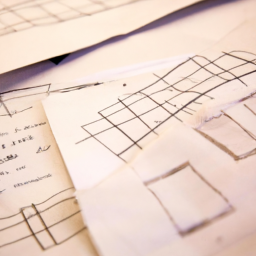
?
Sewing patterns are essential tools for anyone interested in creating their own garments or other fabric-based items. These patterns, typically made from tissue paper or sturdy printed paper, serve as guides to cut and shape fabric pieces to construct a specific design.
Understanding Sewing Patterns
Sewing patterns consist of multiple pieces that, when combined and sewn together, create a complete garment. They contain various lines, markings, and symbols to indicate important measurements, stitching lines, grain lines, notches, and placement guidelines. Detailed instructions are also included to assist in constructing the item step by step.

Can Sewing Patterns Be Reused?
The answer is yes, sewing patterns can be reusable. However, the extent of reusability depends on several factors:
- Quality of the Paper: The durability and quality of the paper affect how many times a pattern can be reused. Patterns on sturdier paper with precise markings tend to withstand multiple uses compared to thinner tissue paper patterns.
- Alterations: If the pattern requires significant alterations to fit an individual’s measurements, it is advisable to create a new pattern. However, if minimal adjustments are needed, the pattern can be reused with slight modifications.
- Material Used for Cutting: Proper cutting tools and techniques are vital to preserving a pattern’s reusability. Using sharp fabric cutting scissors and avoiding excessive force or tearing will help keep the pattern intact for future use.
- Pattern Tracing: Another approach to preserving patterns is tracing them onto sturdier paper or even using pattern-making software. By tracing the original pattern, the risk of damaging it during the cutting process is eliminated.
Taking Care of Sewing Patterns
To extend the life of sewing patterns, consider the following care tips:
- Store patterns in protective sleeves or envelopes to shield them from dust, moisture, and accidental damage.
- Label patterns with relevant details like garment type, size, and date to help with organization.
- Keep patterns in a cool and dry place to prevent humidity-related issues.
- Avoid exposing patterns to direct sunlight, as it can cause fading and weaken the paper.
- Consider making a backup copy of the pattern or storing a digital version as a precaution.
Conclusion
In summary, sewing patterns can indeed be reused, but their longevity depends on various factors like paper quality, alterations made, cutting techniques, and proper care. By handling patterns with care, storing them appropriately, and utilizing the right cutting tools, enthusiasts can maximize the usage of sewing patterns, creating a sustainable and cost-effective approach to garment-making.